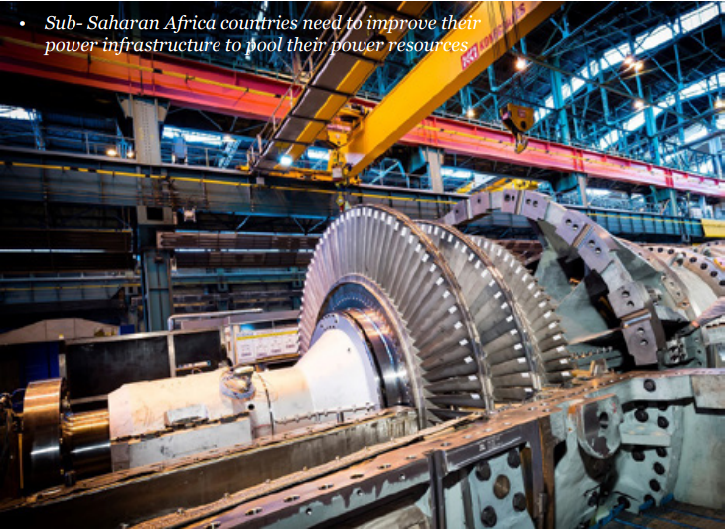East Africa’s Regional Power Pool to Reduce Electricity Costs
The integration of the electricity market in East
Africa has the potential to increase efficiency,
production and cross-border trade, as well as
significantly increase revenue for member countries.
Currently, the electricity markets
of East Africa Community
member countries are hardly
integrated, even though
some countries have bilateral
arrangements that facilitate
the sale of electricity between
them. Harmonizing the design
of electricity trade between
member countries, Kenya,
Uganda, Tanzania, Burundi and
Rwanda could open exciting
new opportunities within the
community.
The International Journal of
Energy Economics and Policy
(IJEEP) in its 2023 research
identified the integration of the
EAC’s electricity market as a
huge opportunity to increase
efficiency, competition and
collapse high cost of electricity in
some parts of the region.
“Electricity market integration
maximizes the utilisation
of interconnector capacities
between countries; hence
electricity flows and elimination
of arbitrage are feasible under
a novel auction mechanism.
The simulation of two cases of
EAC market, the unintegrated
case, which is based on the
current state of the power
markets and case two, which
tends to introduce full-market
integration under modal pricing
reveal a potential increase of
total economic welfare in these
countries,” said IJEEP.
The current net benefit for
unintegrated electricity market is
2.2 million$/h, but net gain for
full integration is 4.8 million$/h.
If the electricity market are
coupled; the welfare gain could
rise by $2.6 million/h. The
uptake in revenue by introducing
full integration at the EAC’
markets proves that introducing
locational pricing and integrating
these markets is fundamental,
the journal added.
The research showed that under
limited integration actual nodal
prices are higher as opposed
to nodal pricing with full
integration in place.
The Kenya power system,
comprising Coastal, Nairobi,
Western, seven folks, and
Eastern systems reflect 108$/
MWh, 112$/MWh, 124$/
MWh 292$/MWh and 178$/
MWh (respectively), under
an unintegrated system. The
Tanzania power system has the
highest modal prices, especially
at the Western system (440$/
MWh) and Dodoma node (438$/
MWh, whereas the Burundi
system has the lowest nodal
price among the five countries
(Bujumbura 7$/MWh and
Rwegura 6$/MWh. Rwanda also
has low nodal prices in both the
Northern and Eastern areas.
In the event the five countries are
integrated, “If the transmission
capacity is unconstrained,
the nodal price in the five
countries could be uniform with
a value of $67/MWh. Uniform
price in the region implies
sufficient transmission network.
However, upon constraining
the power system nodal prices
rise. A comparison between
unintegrated and full integration
reveals that the nodal price
drops by an average of 79%
in the Kenya system, with the
most significant drop being
experienced on the Western
system. On average Kenya’s
nodal prices drop by an average
of $34/MWh,” the energy journal
stated.
A considerable drop will be
recorded in the Nalubale system
in Uganda, whilst Kampala
system’s nodal price increased
by 69%. The average price drop
in Tanzania electricity nodes
is $125/MWh (the highest
reduction among the five
countries). Under the current
arrangement, the Burundi and
Rwanda nodes showed low nodal
prices, but with full integration
price in Burundi will increase by
35$/MWh.
In contrast, Rwanda will
experience a marginal price drop
of $12/MWh. The rise in the
average price in Burundi could
profit the producers in the short
the term, whilst consumers make up
for the loss in benefits.
The nodes with high prices
benefit from nodes with low
nodal prices. This means that the
consumers at high-cost nodes
benefit from the interconnection.
On the contrary, the producers
in low-cost nodes benefit from
selling to higher-cost nodes. Thus
the resultant economic welfare is
increased.
Kenya generates 37% of the
total electricity consumed
in the region, while Uganda
generates 24%. Burundi and
Rwanda generate 34% and 12%
respectively. Tanzania generates
the least at 5% and is the highest
electricity importer among the
five countries.
The total generation in Uganda
is 1900MW, comprising the
Kampala system that generates
45% of the total local generation.
The Karuma system generates
47%, while the Nalubale system
generates 5%. This indicates
that most generating facilities
are attached on the Karuma and
Nalubale system. In Tanzania
each of the four systems generate
25% of national output. However,
the power flow from the nodes
in Kenya and Burundi make
up for the remaining local
demand. Burundi generates 76%
more than local demand. This
excess supply benefits high-cost
nodes in Tanzania, while the
rest is utilized locally. Rwanda
generates 48% more than the
electricity demand locally and the
excess is utilized in Uganda
